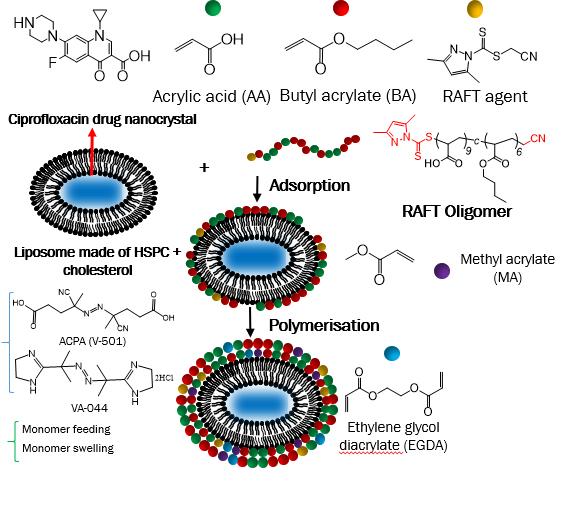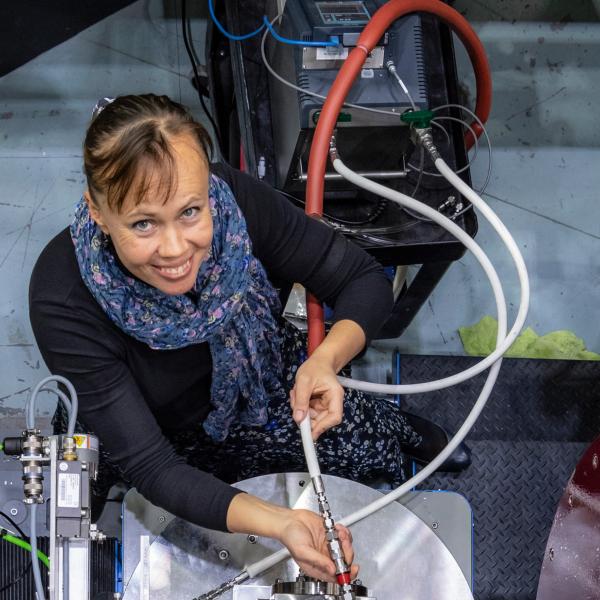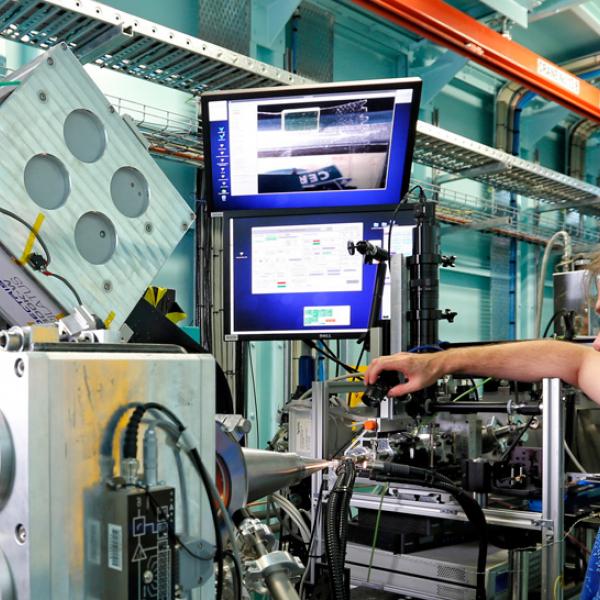

Published on the 27th September 2021 by ANSTO Staff
Key Points
-
Monash researchers have developed a method to prepare elongated nanocrystals to deliver therapeutic drugs
-
Elongated nanocrystals can carry a high payload of drugs to potentially increase drug targetability and also decrease dosage frequency and side effects
-
The researchers used a combination of deuteration, X-ray and neutron techniques at ANSTO to distinguish the three layers of the nanocrystal
Monash University researchers have used advanced techniques at ANSTO to investigate the production of new, elongated polymer nanocapsules with a high payload of drug nanocrystals to potentially increase drug targetability, and also decrease dosage frequency and side effects.
This method had not been investigated previously and represents a pioneering method of investigation in the field of colloidal science applications for drug delivery.
Nanoparticles have been used to increase the delivery efficiency of cancer therapy because of their biocompatibility, versatility and the easiness of functionalisation.
The team engineered novel elongated polymer nanocapsules, which are unlike the more well-known spherical nanocapsules.
The elongated polymer nanocapsules were made with elongated liposomes or surfactant vesicles and used drug nanocrystals as a template.
The results provided strong evidence that the elongated structure could be retained, and also confirmed that the loading method to form rod-like drug nanocrystals inside liposomes was a practical solution.
The combination of the high drug payload, in the form of encapsulated nanocrystals, and the non-spherical feature of liposomes represented a more efficient delivery system.
Spherical hollow nanocapsules have been studied extensively, but the formation of elongated nanocapsules containing active pharmaceuticals as therapeutic agents has been previously largely unsuccessful.
“There are difficulties in retaining the elongated shape and their encapsulation efficiency is low,” explained researcher Yunxin (Cindy) Xiao, a PhD candidate working in the Nonlaminar group with Prof Ben Boyd at the Monash Biomedicine Discovery Institute. and the recipient of the Australian Institute of Nuclear Science and Engineering Post Graduate Research Award.
“The elongated shape is better because it is more difficult for immune cells to internalise them and because their therapeutic efficiency at the target site can be maximised.”
After obtaining promising structural results using a liposomal template investigated using the small angle X-ray scattering beamline at ANSTO’s Australian Synchrotron and the small and ultra-small small-angle neutron scattering instruments Bilby and Kookaburra in previous research, the template was used to form elongated polymer nanocapsules.
The researchers used vesicles made of surfactants as templates, which allowed for the polymerisation of a less permeable shell inside these.

Elongated nanocapsules can be prepared by polymerisation at the surface of elongated liposome templates with drug nanocrystals
In their experiment, nanocrystals of the antibiotic drug ciprofloxacin were then encapsulated in the elongated nanocapsules (approximately 200 nm by 30-50 nm). Importantly, when the test drug nanocrystals were extracted from the elongated nanocrystals in a dissolution process, the nanocrystal capsules retained their shape.
This opens the possibility of their use in delivering a range of active pharmaceuticals, such as anticancer drugs.
The researchers wanted to study how the system was working in detail and needed to see the differences between the three layers of the elongated system – drug nanocrystals, the elongated liposomal template, and the cross-linked polymer.
However, because the liposomal template and the nanocapsules are attached, it is very challenging to distinguish these layers. Here deuteration and neutron scattering can offer a great solution.
In experiments at the Australian Centre for Neutron scattering, a type of deuterated phospholipid, provided by the National Deuteration Facility, was used in the formation of the nanocrystals – which mean that the small-angle neutron scattering instrument Bilby could investigate the two different parts of the system.
The difference in neutron scattering from hydrogen and deuterium atoms can be used in contrast variation experiments, which allows different parts of a complex system, like the elongated nanocapsules. to be studied.
Contrast in small-angle neutron scattering can mask or highlight the different components if they are deuterated.
The use of different instruments opens up different length scales to investigation – from micrometres to nanometres.
The researchers used the Bilby instrument to analyse the formation of the polymers on the surface of the elongated liposomal template. They also determined the thickness of the elongated polymer layer and found which parts of the system were being stretched.
“The approach makes it possible to visualise different parts of the samples independently,” said Xiao.
Because the rigid polymeric shell is able to adapt the shape of the template, its features can be retained.
The benefit of synthesising a layer of polymer on the surface of the nanocapsules instead of just directly delivering the liposomes gives the cross-linked polymer the ability to release a drug slowly and safely.
The polymer shell further slows down the diffusion of drugs from the nanocarriers, decreasing side effects and reducing dose frequency.
The use of different instruments allows researchers to investigate at different length scales.
The work of this group has been published previously in the journal Colloids and Surfaces B: Biointerfaces
This research was a finalist in ANSTO’s Neutron and Deuteration Impact Awards, demonstrating their relevance to health, one of Australia’s research priorities. It has been submitted for publication.









